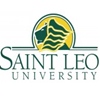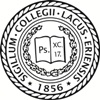Introduction and Overview
Location: Located in Painesville, Ohio, about 30 miles east of Cleveland, the campus is surrounded by beautiful natural landscapes and a tranquil rural environment.
Student size: The total number of students is about 1,000. This smaller scale allows for closer interaction between teachers and students.
Campus size: The campus covers an area of 500 acres, including lakes, forests, and horse farms. The campus environment is beautiful and distinctive.
History and founding time
Lake Erie College was founded in 1856 and has a long history. It was originally a women's college that provided higher education opportunities for women, and later developed into a coeducational private college.
School Strength
Faculty: It has a highly qualified faculty team with rich experience in teaching and research. The teacher-student ratio is about 1:12, which ensures that students can get full attention and guidance from teachers.
Teaching resources: The school offers a variety of courses, including more than 40 undergraduate majors and some graduate courses. The school's library, laboratories and teaching facilities are constantly updated and improved to provide students with good learning conditions. There are also special teaching facilities such as the equestrian center.
Nature of the institution
It is a private liberal arts college that focuses on the all-round development of students and emphasizes the comprehensive cultivation of liberal arts, science and practical skills.
Educational philosophy
The goal is to cultivate students with critical thinking, innovative spirit and social responsibility. The school encourages students to actively participate in classroom discussions, community services and practical activities, pays attention to personalized education, and designs learning paths according to students' interests and specialties.
Key laboratories and disciplines
Key disciplines: Equestrian research is the school's characteristic discipline and is in a leading position in the United States. Its equestrian business management, equestrian science and other majors provide professional education for students interested in equestrianism. In addition, business, education, health science and other majors also have certain advantages.
Key laboratories: In the field of equestrianism, there are advanced stables, training grounds and other facilities, which can be regarded as "laboratories" for practical teaching. There are also corresponding laboratories in scientific disciplines for experimental teaching in biology, chemistry and other disciplines.
Faculty
The school is divided into several faculties, including the Faculty of Humanities and Social Sciences, the Faculty of Natural Sciences and Mathematics, the School of Business, the School of Education, etc. Each faculty offers a range of courses in related majors.
Ranking
It performs well in some liberal arts college rankings, such as a certain ranking in the US News ranking of American liberal arts colleges. Although it is not a top-notch school, it has a high degree of recognition in the region and in its specialty fields.
Expenses
Tuition fees are relatively high. The annual tuition fees, accommodation fees, etc. vary depending on factors such as majors and course selections, and are roughly around $40,000 to $50,000. The school provides certain scholarships and grants to help students reduce their financial burden.
Campus Environment
Buildings and Facilities: There are historic buildings on campus, such as old teaching buildings and dormitories, as well as modern facilities such as libraries, laboratories, and sports stadiums. The Equestrian Center is a highlight of the campus, with large indoor and outdoor horse farms and other facilities.
Natural Environment: The campus is rich in natural landscapes, with lakes and forests, providing students with space for leisure and outdoor activities. Students can take a walk by the lake and observe the natural ecology in the forest.
Humanistic environment: The school has created a friendly and inclusive campus cultural atmosphere, with rich and diverse student organizations and club activities, including academic clubs, art clubs, sports clubs, etc., allowing students to give full play to their interests and hobbies and make like-minded friends.
-

Harvard University
-

Massachusetts Institute of Technology
-

South University
-

University of West Georgia
-

Stanford University
-

Northwest Nazarene University
-

Hawaii Pacific University
-

Shorter University
-

Nova Southeastern University
-

Saint Leo University
-

Mesoamerican University
-

Istmo University
-

Mariano Galvez University of Guatemala
-

Regional University of Guatemala
-

Galileo University
-

Francisco Marroquín University
-

Rafael Landívar University
-

University of the Valley of Guatemala
-

University of San Carlos of Guatemala
-

Technological Institute of Tlaxcala Plateau
-

Golfo University
-

Technological University of South Sonora
-

Technological University of Huejotzingo
-

Tizimín Institute of Technology
-

Chilpancingo Institute of Technology

